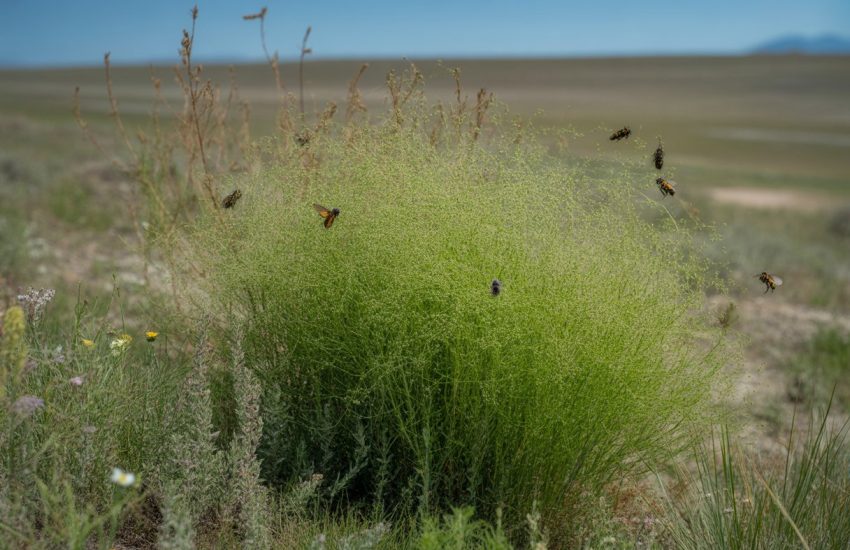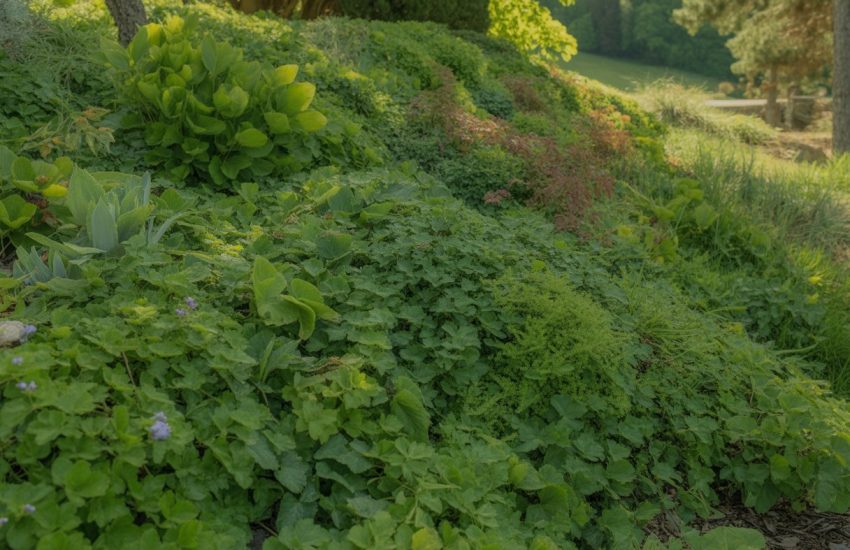Trees with Pink Flowers in Texas: A Guide to Species and Where to Find Them
Texas is known for its diverse flora and fauna, and one of the most beautiful sights in the state is the abundance of trees with pink flowers. These trees add a pop of color to the landscape and are a favorite among locals and tourists alike. From the iconic Texas redbud to the lesser-known Mexican plum, there are many different species of trees with pink flowers to admire.

The Texas redbud is perhaps the most well-known of the pink-flowered trees in the state. This small tree is native to Texas and can be found in many parks, gardens, and natural areas throughout the state. Its vibrant pink blooms appear in early spring, making it a popular choice for landscaping and gardening. However, the Texas redbud is just one of many pink-flowered trees that can be found in Texas, each with its own unique characteristics and beauty.
Popular Pink Flowering Trees in Texas
Texas is home to a variety of beautiful trees with pink flowers that can add a touch of color and beauty to any landscape. Here are some of the most popular pink flowering trees in Texas:
Eastern Redbud (Cercis Canadensis Var. Texensis)
The Eastern Redbud is a small tree that is native to Texas and is known for its beautiful pink flowers that bloom in early spring. The tree is also known for its heart-shaped leaves, which turn yellow in the fall. Eastern Redbuds are often used as ornamental trees in landscaping due to their beautiful flowers and unique foliage.
Texas Redbud (Cercis Canadensis)
The Texas Redbud is another popular pink flowering tree that is native to Texas. It is similar to the Eastern Redbud but has slightly larger leaves and flowers. The tree blooms in early spring and is often used as an ornamental tree in landscaping due to its beautiful pink flowers and unique foliage.
Crape Myrtle (Lagerstroemia)
Crape Myrtle is a popular tree in Texas that produces beautiful pink flowers in the summer. The tree is known for its long blooming season, which can last from June to September. Crape Myrtles are often used as ornamental trees in landscaping due to their beautiful flowers and unique bark.
Desert Willow (Chilopsis Linearis)
The Desert Willow is a small tree that is native to Texas and produces beautiful pink flowers in the summer. The tree is known for its long, narrow leaves and unique bark. Desert Willows are often used as ornamental trees in landscaping due to their beautiful flowers and unique foliage.
Magnolia Trees
Magnolia Trees are a popular ornamental tree in Texas that produces beautiful pink and white flowers in the spring. The tree is known for its large, glossy leaves and unique flowers. Magnolia Trees are often used as ornamental trees in landscaping due to their beautiful flowers and unique foliage.
Overall, these pink flowering trees can add a touch of color and beauty to any landscape in Texas. Whether you are looking for a small ornamental tree or a larger shade tree, there is a pink flowering tree in Texas that will fit your needs.
Caring for Pink Flowering Trees
Pink flowering trees are a beautiful addition to any landscape in Texas, but they do require proper care and maintenance to thrive. In this section, we will discuss the soil and water requirements, sunlight and location preferences, as well as pruning and maintenance tips for pink flowering trees.
Soil and Water Requirements
Pink flowering trees prefer well-draining soil that is rich in organic matter. They can tolerate a wide range of soil types, but thrive in slightly acidic to neutral soils with a pH between 6.0 to 7.5. It is important to avoid planting pink flowering trees in heavy clay soils that can retain too much water and cause root rot.
When it comes to watering, pink flowering trees require regular watering during their first year of growth to establish a strong root system. After the first year, they become more drought-tolerant and can go longer periods without watering. However, it is important to water deeply and thoroughly when watering to ensure the roots receive enough moisture.
Sunlight and Location Preferences
Pink flowering trees require full sun to partial sun to thrive. They should be planted in a location that receives at least 6 hours of direct sunlight per day. It is also important to consider the location’s exposure to wind, as strong winds can damage the tree and its blooms.
Pink flowering trees are suitable for USDA hardiness zones 7 to 9 in Texas. It is important to choose a species that is suitable for the specific hardiness zone in which it will be planted.
Pruning and Maintenance
Pruning is an important part of maintaining the health and appearance of pink flowering trees. It is recommended to prune in late winter or early spring before new growth begins. Pruning should be done to remove dead, diseased, or damaged branches, as well as any crossing or rubbing branches.
Fertilizer can be beneficial for pink flowering trees, especially during their first year of growth. A balanced fertilizer with equal amounts of nitrogen, phosphorus, and potassium can be applied in early spring before new growth begins.
In conclusion, pink flowering trees require proper care and maintenance to thrive in Texas. By following the soil and water requirements, sunlight and location preferences, as well as pruning and maintenance tips discussed in this section, one can ensure their pink flowering trees remain healthy and beautiful for years to come.
Landscaping with Pink Flowering Trees

Pink flowering trees are a great addition to any garden or landscape in Texas. They add a pop of color and can create a stunning focal point in any space. Here are some design considerations, companion planting options, and wildlife attraction benefits to keep in mind when landscaping with pink flowering trees.
Design Considerations
When selecting a pink flowering tree for your garden or landscape, consider the size and shape of the tree. Some pink flowering trees, such as the Eastern redbud, grow to be 20-30 feet tall, while others, like the Texas mountain laurel, only reach about 10-15 feet. Additionally, some pink flowering trees have a more rounded shape, while others have a more upright or weeping form.
Another consideration is the time of year that the tree blooms. Some pink flowering trees, like the Texas redbud, bloom in early spring, while others, like the desert willow, bloom in the summer. This can affect the overall look and feel of your garden or landscape throughout the year.
Companion Planting
Companion planting is a great way to enhance the beauty of your pink flowering tree and create a cohesive garden or landscape design. Consider planting low-growing groundcovers, such as creeping phlox or ajuga, around the base of the tree to create a lush and colorful ground layer.
You can also plant other flowering shrubs or perennials that bloom at different times of the year to create a multi-seasonal display. For example, planting purple coneflowers or black-eyed Susans near your pink flowering tree can create a stunning contrast in color and texture.
Wildlife Attraction
Pink flowering trees are not only beautiful to look at, but they can also attract pollinators and wildlife to your garden or landscape. Hummingbirds are particularly attracted to pink flowers, so planting a pink flowering tree, such as the Texas redbud or the crape myrtle, can help attract these colorful birds to your garden.
Additionally, bees and butterflies are also attracted to pink flowers, so planting a pink flowering tree can help support these important pollinators in your area.
Overall, landscaping with pink flowering trees can add beauty and interest to any garden or landscape in Texas. With careful consideration of design, companion planting, and wildlife attraction, you can create a stunning and vibrant outdoor space.
Selecting the Right Pink Flowering Tree

When it comes to selecting a pink flowering tree for your Texas landscape, there are several factors to consider. From climate and hardiness zones to tree size and growth habits, each element plays a crucial role in determining the success of your tree. Here are some things to keep in mind when selecting the right pink flowering tree for your garden.
Climate and Hardiness Zones
The local climate and USDA hardiness zone are critical factors to consider when selecting a pink flowering tree. Texas is known for its hot and humid summers, so it’s essential to choose a tree that can tolerate these conditions. Some popular pink flowering tree species that thrive in Texas include the Texas redbud, desert willow, and eastern redbud.
Tree Size and Growth Habits
Before selecting a pink flowering tree, it’s crucial to consider the mature size and growth habits of the tree. Some trees can grow up to 30 feet tall, while others are more compact and ideal for small gardens. It’s also essential to consider the tree’s growth habit, such as its shape and branching pattern, to ensure it fits well with the surrounding landscape.
Blossom Time and Color Variations
Pink flowering trees come in a range of shades, from soft pastels to vibrant fuchsia. It’s essential to consider the color variation that will best complement your landscape and home. Additionally, the bloom time of the tree is crucial, as some species bloom in early spring, while others bloom later in the season.
In summary, selecting the right pink flowering tree for your Texas landscape requires careful consideration of several factors, including climate and hardiness zones, tree size and growth habits, and blossom time and color variations. By taking these elements into account, you can choose a tree that will thrive in your garden and add a beautiful pop of pink to your outdoor space.


